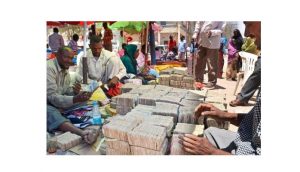I wanted to share with you a tool that we have been using with key stakeholders and which you may find useful in representing to interlocutors the overall cash flow management process on which the Somali remittance industry depends. I know that many people to whom I speak find the cash/value management confusing, and this tool has been helpful in explaining the process in simple terms. Obiter Consult Ltd work on building the capacity, effectiveness, and oversight of the checks and balances at each of the hubs identified in the accompanying tool which we have uploaded to ‘youtube’ for convenience: https://www.youtube.com/watch?v=sZ76yfpr8qE
to share with you a tool that we have been using with key stakeholders and which you may find useful in representing to interlocutors the overall cash flow management process on which the Somali remittance industry depends. I know that many people to whom I speak find the cash/value management confusing, and this tool has been helpful in explaining the process in simple terms. Obiter Consult Ltd work on building the capacity, effectiveness, and oversight of the checks and balances at each of the hubs identified in the accompanying tool which we have uploaded to ‘youtube’ for convenience: https://www.youtube.com/watch?v=sZ76yfpr8qE
How to begin to explain the structure of the typical Somalia remittance corridors from multiple originating countries, utilising the UAE as the centre for management of cash-flow mismatches versus remitter to recipient value transference?
DETAIL
- Movement of Value.
Remitter 1 is a Somali living abroad, perhaps in Bristol who wants to send small sums of money back to the family (Recipient 1) in Mogadishu. The MTO in Somalia contacts Recipient 1, who after identifying themselves collects the cash intended for them in ($). The timescale for this activity may be very short.
Remitter 2 is a Somali businessman living in Mogadishu (note the briefcase) who intends to procure products from overseas (probably Dubai because of cost and proximity) for sale in Somalia. Remitter 2 takes cash ($) to the local office of a Somali MTO and passes the contact details of the company (Recipient 2) from whom he intends to procure his goods plus administrative details (pre-payment invoice, source of funds, etc) to the MTO. The MTO in Dubai contacts Recipient 2 and having matched up the administrative details (to comply with AML/CFT regulations) who collects the ($) and arranges for despatch of the goods to Remitter 1. The timescale for this activity may be very short.
- Movement of cash.
The (£) cash deposited by Remitter 1 (along with cash collected from many other Somali remitters in the locality) is transported by road to London to the premises of a Money Services Bureau (MSB) such as Moneycorp or Choice. The MSB converts the (£) cash into ($) in their bank account. The MSB instructs the bank to make a ($) bank transfer to the Dubai bank account of the MTO.
- Transfer of Value and Cash-Flow Management after settlement of all transactions.
Recipient 1 in Somalia receives his cash ($) from the MTO in Somalia, who draws upon the funds deposited with him by Remitter 2. Because of the absence of a banking infrastructure in Somalia, no cash is transported in or out of Somalia (except occasionally when there is an imbalance which results in the need to manage cash-flow shortfall or surplus in the UAE and cash-flow shortfall or surplus in Somalia).
The overall combination of the 2 processes (Transfer of Value and Cash-Flow Management) after settlement of all transactions, and inclusion of the mismatch net to zero.
Funds transferred from the UK terminate in the UAE and are used to settle the delivery of funds to recipients that are remitted from Somalia. And funds transferred from Somalia are used to pay recipients in Somalia of funds transferred from the UK.
The presentation depicts two processes happening concurrently. TRANSFER OF VALUE represents the transfer of value from a Remitter 1 in the UK to the intended Recipient 1 in Somalia and the transfer of value from a business Remitter 2 in Somalia to the intended trading Recipient 2 in the UAE. TRANSFER OF CASH represents the movement of physical cash and/or electronic transfers bank to bank. The management of cash surpluses and shortfalls in both the UAE and Somalia is a necessity because of the absence of a viable financial sector in Somalia.
Importantly, the two processes combined represent CASH-FLOW MANAGEMENT and if the amounts being remitted from the UK happen to equal the amounts being remitted from Somalia, then the net position will equal zero after all remittances are settled.
